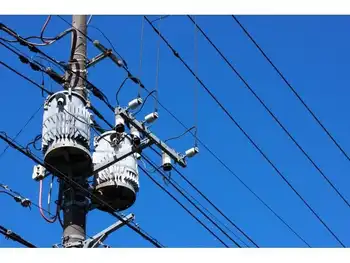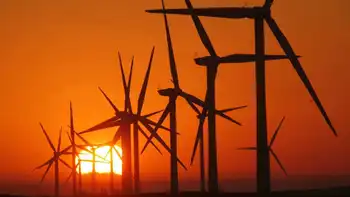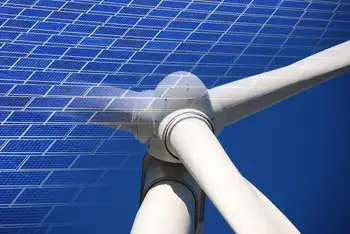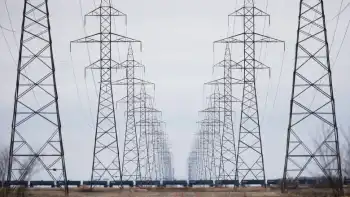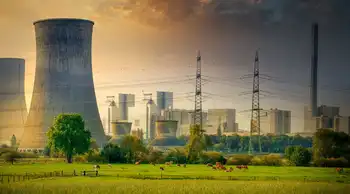Power line not needed, report says
By Knight Ridder Tribune
CSA Z463 Electrical Maintenance -
Our customized live online or in‑person group training can be delivered to your staff at your location.

- Live Online
- 6 hours Instructor-led
- Group Training Available
The Division of Ratepayer Advocates, an agency within the California Public Utilities Commission that reviews utility projects on consumers' behalf, has concluded in a new report that enough steps already have been taken to plug a forecasted shortfall for 2010 without the superhighway of electricity. San Diego Gas & Electric Co. is proposing to build the $1.3 billion from El Centro to San Diego. The line is strongly opposed by environmental groups and people who live along the route, which would wind through Anza-Borrego Desert State Park, Santa Ysa el, Ramona and Rancho Penasquitos. The Public Utilities Commission, a regulatory agency, is analyzing the project's potential impacts and preparing to hold hearings in July.
It is scheduled to decide whether to issue a license for the line's construction in January 2008. The 2010 shortfall is projected by the utility to reach 250 megawatts, enough power to keep the lights on in as many as 250,000 homes. Steps to plug that gap include the utility's plan to begin next year rolling out state-of-the-art meters that curb consumption in summer peak hours and its signing this month of contracts to build small power plants that crank up during such peak period. San Diego Gas & Electric officials said the utility is simply taking prudent steps to boost supplies while it awaits a decision on Sunrise, and its efforts do not negate the need for Sunrise.
The report strongly disagrees. "Sunrise is clearly not needed to meet any of its stated objectives, including the critical goal of providing reliable service in San Diego," the report states. "DRA is not convinced that Sunrise is the best alternative for meeting such goals - or even that Sunrise's benefits will exceed its costs." But San Diego Gas & Electric maintains that the power line, known as Sunrise Powerlink, would prevent outages, reduce power costs and open a way for electricity generated by non-fossil-fuel sources, such as solar and geothermal energy, in the Imperial Valley to flow to San Diego County homes.
"Sunrise is a long-term solution to the energy future of our region," said Stephanie Donovan, a spokeswoman for the utility company. "The Sunrise Powerlink continues to be the only proposed alternative that has been put on the table at this point that provides reliability, accessibility to renewables and reduces overall cost for customers." The report also questions the utility's claim that the transmission project line would save regional electric customers collectively more than $100 million a year. "Sunrise should not be assumed to yield significant reductions in energy costs," the report states.
Utility officials stand by their savings estimates, Donovan said. On the plus side for San Diego Gas & Electric, the report said Phoenix-based Stirling Energy Systems is on track to succeed with its plans to build a giant solar plant in the desert. The utility has been banking in part on a contract that calls for Stirling to ship 300 megawatts initially, and eventually 900, to San Diego County via the power line. The line's capacity would be 1,000 megawatts - equal to one-fifth of the region's current supply. "There is no reason, at this date, to expect that SES (Stirling) will not be able to obtain necessary permits and land access, and supply sufficient quantities of solar generation at expected costs to meet their contractual obligations with SDG&E," the eport states.
The report, containing 196 pages of testimony from several U.S. and Canadian energy consultants hired by the division to analyze Sunrise, was filed late Friday night with the Public Utilities Commission. It is one of several reports the commission will consult on its way to deciding, by January, whether to issue a license to build the power line. For now, said Scott Logan, senior regulatory analyst, the agency has not decided to oppose the project. "We're not saying thumbs down flat out in this round of testimony," Logan said. Donovan said the agency's testimony needed to be kept "in perspective.
The Division of Ratepayer Advocates is just one of many agencies that are reviewing this project. The DRA is just one voice that is weighing in." The California Independent System Operator, which oversees the state's power grid, weighed in earlier. The independent agency concluded last year that Sunrise would provide benefits for the utility's customers and electric ratepayers throughout California. The utility serves all of San Diego County and southern Orange County. In a related matter, the Public Utilities Commission announced in letters over the weekend it is studying a modified alternate route for Sunrise.
It is part of a route that would circumvent Anza-Borrego Desert State Park to the south along Interstate 8 nd arc north through the mountains of East County to Warner Springs, site of a proposed substation. The modified portion of the route would circle south of I-8 at one point, to avoid a wilderness area in the Cleveland National Forest.





